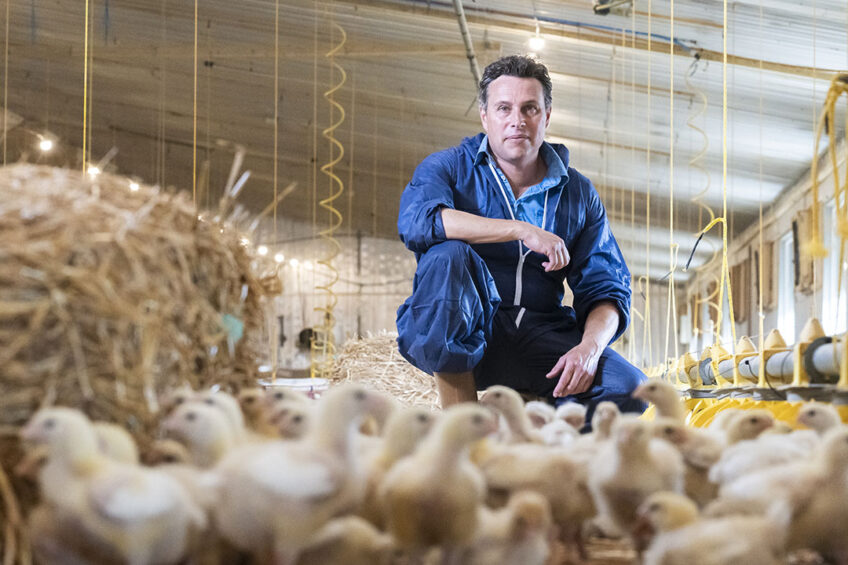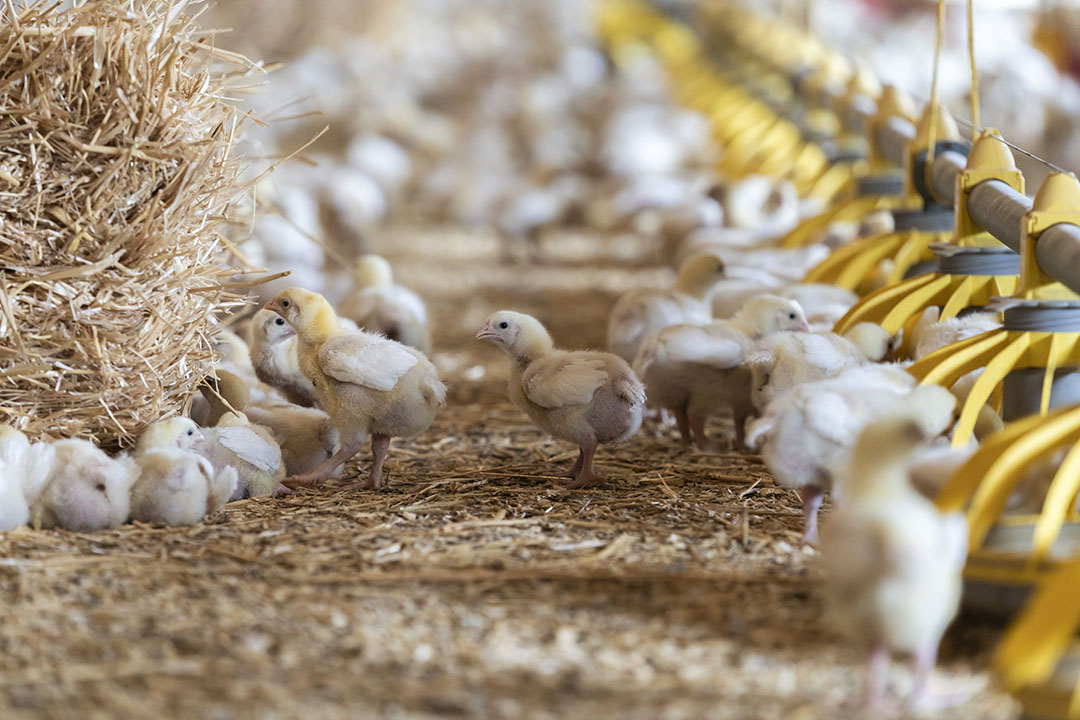Committing to a ‘Better Chicken’ in the UK

So far, 128 UK companies have signed up to the Better Chicken Commitment in the United Kingdom. Poultry World asked the frontrunners of this pack how they are faring. Retailer Marks and Spencer and broiler farmer Jeremy Iles have fully implemented the production system described under the Better Chicken Commitment requirements and are expecting the other signees to follow suit.
The UK has the highest number of companies signed up to the Better Chicken Commitment in Europe. “The UK is leading, then you have France, Germany and Sweden,” says Paul van Boekholt, northern Europe business manager for Hubbard. The UK commitments are mostly in food service, with 2 retailers signed up as well. Only one of these, that being Marks and Spencer, has begun the transition to the Better Chicken Commitment with 100% of their fresh chicken meeting the standard.
Marks and Spencer signed the pledge in 2019 and moved to full implementation in September 2022. Vivienne Harris, Marks and Spencer agriculture manager, shared the company’s recent experience. “Marks and Spencer saw this as an opportunity to lead the market in animal welfare; that is a key aspect of how we do things. The most important things for M&S shoppers when buying fresh chicken are meat quality, British origin, and the welfare of the animal,” she commented, explaining how its customers differentiated from wider consumer market trends.
Engagement with the entire supply chain
Moving on to the challenge of changing the entire production system for their fresh chicken, Harris says that the transition had taken a lot of strategic planning: “We needed to engage everyone in the chain, very much including the farmers, and our agricultural roadshows last summer were really key to what we did.”
Securing a dedicated group of farmers was highlighted as a main focus for Marks and Spencer. “Ensuring that we had enough space on the ground to grow all the birds for the right length of time and at the right stocking density was important, as this required more space than what we were previously doing,” said Harris.
There is a clear benefit for Marks and Spencer in that being first to market has bolstered its ethical credentials. Underlining Marks and Spencer’s future plans, Harris notes: “Although our focus so far has been on fresh chicken, we are looking at the rest of our chicken offering. We are the number one retailer for RSPCA-assured products and that’s something we want to remain.”
Farmer switches to slow-growing birds
It’s not only Marks and Spencer who appear to be pleased with the move to the Better Chicken Commitment. Jeremy Iles farms the picturesque Leafield Farm near Cirencester in Gloucestershire. He was producing standard broilers and when the opportunity arose to switch to a slower-growing bird he was keen to take it up. Starting in 1986, the farm has 4 poultry houses, with periods supplying Faccenda, Hook2Sisters and Avara Foods. The business currently has a contract with Hook2Sisters growing the Oakham Gold for Marks and Spencer. The farm grows around 95,000 birds at a time and does 6 crops a year. There tends to be a split between Hubbard JA787 and Redbro, with the current flock having 1 house of Redbro and 3 of JA787.

“There is absolutely nothing to dislike about the JA787, even in hot weather,” Iles says enthusiastically. “If you’re looking at risk management as a farmer, they’re great, particularly if you have older sheds.” Generally the farm achieves consistently under 1% mortality for the first week, averaging at around 0.7%. The JA787s will be grown up to 47 days, with the Redbros going to around 42 days. The farm aims to achieve 2.4 kg liveweight at the time of slaughter, at times having to balance good performance with not letting the birds get too heavy.
Iles praises the Marks and Spencer approach: “I like the fact that when the birds go out it is your farm name on the packaging. The traceability is great, because people ask us about our products and it’s nice to be able to tell people where to go to buy them. We get more of a connection with the public.”
The bales of straw which are required as enrichment under the Marks and Spencer programme are produced from the farm’s arable enterprise and wrapped in silage plastic immediately after being baled to protect them from any contamination. “I am the only one who deals with the bales and if I have any concerns about their hygiene then I don’t bring them into the chicken house.”
Avian influenza, high heating and electricity costs
Touching on some of the challenges that his business faces, biosecurity is a key focus area. “Biosecurity is a lot tighter than it was 5 years ago. We have several large game bird estates near us and we have to be very careful. Avian influenza is not going to go away,” says Iles. “Although we have tried to minimise the impact, the high electricity and heating costs have been a constant stress to the industry and I hope the industry continues to remind the retailers of this challenge and reflect it in our margins.”
Looking to the future Iles is planning refurbishments of his 2 older houses, replacing the walls and the roofs over a period of time. He also hopes to get an apprentice for the poultry unit, as he has used them in other parts of the farm. But for now, it is clear that Jeremy Iles gains a huge amount of satisfaction from managing his Hubbard chickens. “They are a pleasure to walk through and you are proud to show them off at the end, either as part of education visits or to small groups. People often have pre-conceptions of what poultry farms look like and it is satisfying to counter those ideas with the high welfare system that Marks and Spencer favours.”
There remain questions around whether all the 128 companies signed up in the UK will meet the Better Chicken Commitment deadline of 2026. UK retailers Sainsbury’s and Coop recently committed to decreasing stocking rates but are leaving their choice of breed unchanged. However, Marks and Spencer appear to be pleased that they made the change early. “Sales have been in line with expectations. ‘ReMARKSable’ value lines have seen really strong sales volumes, where we are price matching legs, wings and drumsticks with other retailers. We are also getting fewer customer complaints year-on-year,” says Harris.
Join 31,000+ subscribers
Subscribe to our newsletter to stay updated about all the need-to-know content in the poultry sector, three times a week. Beheer
Beheer











 WP Admin
WP Admin  Bewerk bericht
Bewerk bericht